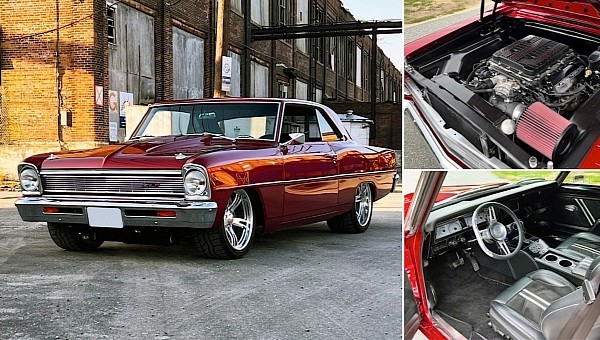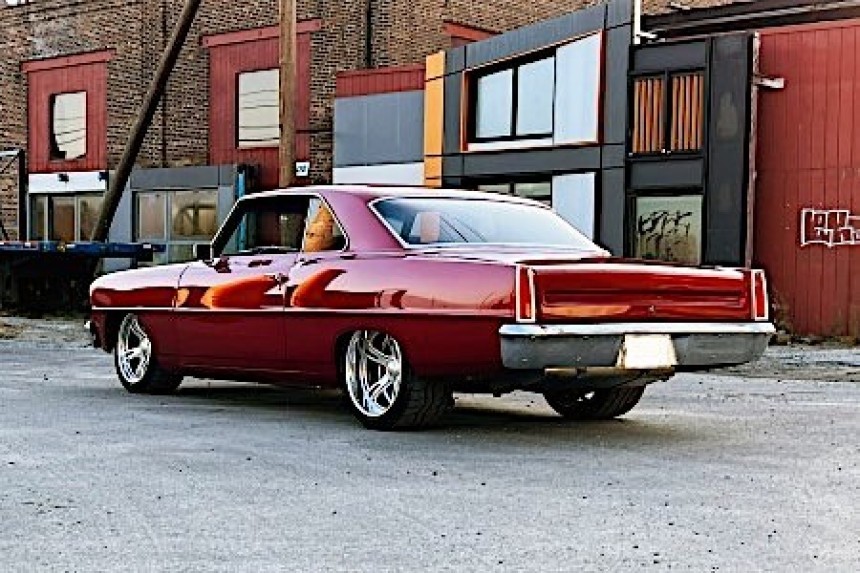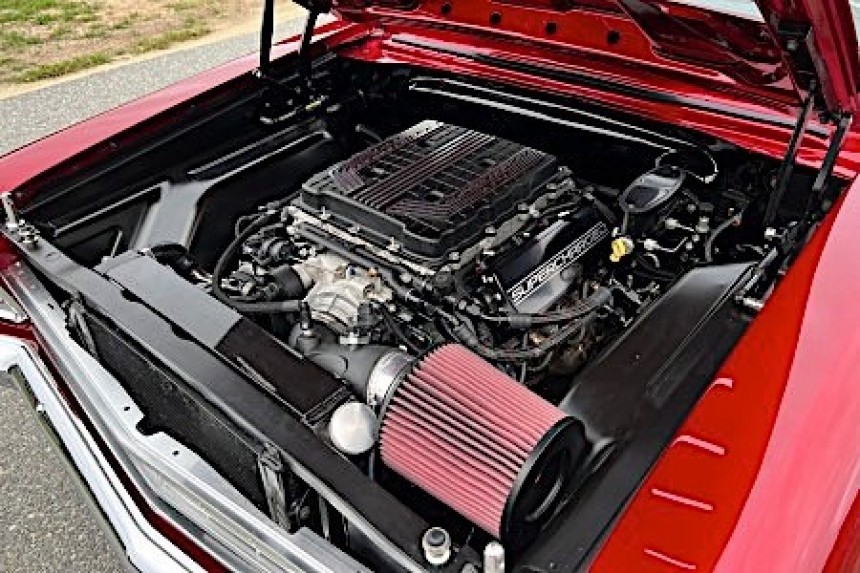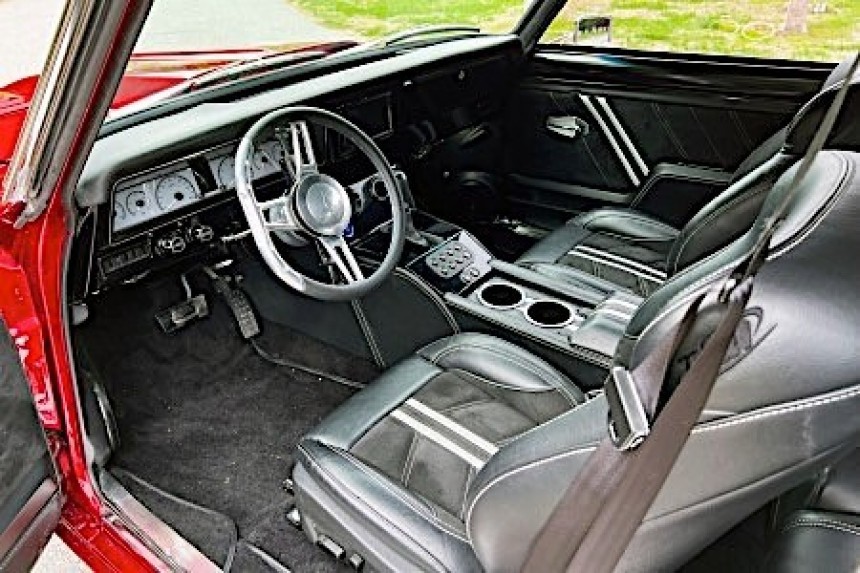It’s not all that rare for a car nameplate that has been around for just under two decades to become a solid pillar of the present-day custom industry. There are many examples of that happening, but of particular concern to us today is the Chevrolet Nova, or the Chevrolet Chevy II, if you like it better that way.
The model was introduced by Chevrolet in 1961 as s small car and was successful enough to be kept in production for five full generations, with a rather large gap between the fourth and fifth ones. It was initially made until 1979, with the last iteration coming as a short-lived revival (just three years on the market) in the mid-1980s.
It is naturally the first couple of iterations of the Nova, from the 1960s, that most often capture the imagination of custom garages across America. Because let’s face it, that was a decade when they sure knew how to design cars.
The one we have here is a second-gen, being born somewhere in a Chevy factory in 1966. Like many examples that surface in our time in an unbelievable shape, its history on the road as a regular Nova is not known. What we do know is how it looks and what it promises now, after going through an extensive customization process that turned it into this.
Work on the car ended, believe it or not, this year, so this is probably the first time the world comes face to face with it. It’s no longer called Nova but Novakill. Not because it’s a menace to its or other drivers, but because it should kill competition on any track, if properly and timely let loose.
That’s because of the engine now hiding under the beautifully sculpted, cowl-induction hood. You see, Novas from that generation had a choice of six engines, the smallest being the 153ci inline-four and the largest the 327ci V8. The latter was obviously the most potent of the bunch, releasing in controlled bursts a total of 350 hp.
The one we have here uses none of those. Instead, a supercharged, Chevrolet Performance LT4 crate engine was installed. 376ci in displacement, it develops right from the crate 640 horsepower and 630 lb.-ft. of torque, but this one has 10 hp more than that to send out hunting for track prey.
That wouldn’t have meant much had the engine been alone in this. But it’s not, as an 8-speed automatic transmission and a Ford 9-inch rear end are there to properly handle all that power. What’s more, it’s backed by what appears to be the mother of all pro-touring gear.
Despite looking a lot like an ordinary Chevy, the Novakill is anything but, at least underneath. The front is supported by a Detroit Speed subframe equipped with tubular upper and lower control arms, and adjustable coilover shocks are featured all around.
The connection to the ground is achieved by means of staggered 18-inch wheels of the Schott forged billet variety, all four dressed in Falken Azenis tires. Behind them, Wilwood braking hardware is provided for stopping needs.
It’s a bit unusual for us to begin with the mechanical bits of a custom car, but this one seems to have been worth it. We can’t completely ignore the way the Novakill looks, though, because there’s plenty to drool over.
First up it’s impossible not to notice just how smooth and straight the entire body of the car is. The color chosen for it, something called Soul Red Crystal metallic, is a perfect match for the extensive presence of chrome on the front end, the trim that runs the length of the car, and of course on the wheels.
For all the excitement the exterior creates I have to admit the interior is a bit of a letdown, at least as far as materials and colors used. The bucket seats do not come in beautifully colored leather, but in dull shades of grey and black slapped on suede and vinyl. Not a single splash of color is there to somehow connect the interior to the exterior, and that kind of makes you feel you somehow stepped into the wrong car.
But hey, as far as we can judge, this thing was made for track duties, and you don’t really need brown or red leather for that. What you need is a set of Dakota Digital gauges (check), push-button start (check), and a Bluetooth Pioneer audio system with touchscreen (check). Wait, what? You don’t really need that last bit for quarter-mile runs, do you? Probably not, but it’s there anyway.
We learned of this car’s existence because it will soon be listed by auction house Barrett-Jackson for sale during the Palm Beach event in mid-April. No estimate as to how much could it fetch is made. As usual though, we’ll get back on the story when (and if) the 1966 Chevrolet Novakill SS burns a big enough hole through someone’s pockets.
It is naturally the first couple of iterations of the Nova, from the 1960s, that most often capture the imagination of custom garages across America. Because let’s face it, that was a decade when they sure knew how to design cars.
The one we have here is a second-gen, being born somewhere in a Chevy factory in 1966. Like many examples that surface in our time in an unbelievable shape, its history on the road as a regular Nova is not known. What we do know is how it looks and what it promises now, after going through an extensive customization process that turned it into this.
Work on the car ended, believe it or not, this year, so this is probably the first time the world comes face to face with it. It’s no longer called Nova but Novakill. Not because it’s a menace to its or other drivers, but because it should kill competition on any track, if properly and timely let loose.
The one we have here uses none of those. Instead, a supercharged, Chevrolet Performance LT4 crate engine was installed. 376ci in displacement, it develops right from the crate 640 horsepower and 630 lb.-ft. of torque, but this one has 10 hp more than that to send out hunting for track prey.
That wouldn’t have meant much had the engine been alone in this. But it’s not, as an 8-speed automatic transmission and a Ford 9-inch rear end are there to properly handle all that power. What’s more, it’s backed by what appears to be the mother of all pro-touring gear.
Despite looking a lot like an ordinary Chevy, the Novakill is anything but, at least underneath. The front is supported by a Detroit Speed subframe equipped with tubular upper and lower control arms, and adjustable coilover shocks are featured all around.
It’s a bit unusual for us to begin with the mechanical bits of a custom car, but this one seems to have been worth it. We can’t completely ignore the way the Novakill looks, though, because there’s plenty to drool over.
First up it’s impossible not to notice just how smooth and straight the entire body of the car is. The color chosen for it, something called Soul Red Crystal metallic, is a perfect match for the extensive presence of chrome on the front end, the trim that runs the length of the car, and of course on the wheels.
For all the excitement the exterior creates I have to admit the interior is a bit of a letdown, at least as far as materials and colors used. The bucket seats do not come in beautifully colored leather, but in dull shades of grey and black slapped on suede and vinyl. Not a single splash of color is there to somehow connect the interior to the exterior, and that kind of makes you feel you somehow stepped into the wrong car.
We learned of this car’s existence because it will soon be listed by auction house Barrett-Jackson for sale during the Palm Beach event in mid-April. No estimate as to how much could it fetch is made. As usual though, we’ll get back on the story when (and if) the 1966 Chevrolet Novakill SS burns a big enough hole through someone’s pockets.









